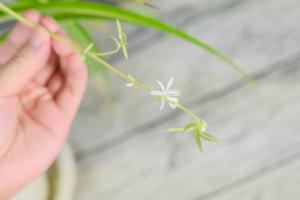Beheading method of blue stone lotus
Beheading is usually performed after the bluestone lotus grows. After the bluestone lotus grows in vain, the central leaves obviously gather and the stems elongate. At this time, the leaves can be removed, the elongated part can be cut off and replanted

Blue stone lotus has strong reproductive ability. Some people like to grow in groups. The cut leaves and buds will grow rapidly, and many small buds will appear in the rest, which is another growth landscape


Leaf inserting method of blue stone lotus
Select healthy and disease-free mother plants and cut the leaves. You can select old leaves or buds and cut them
Then lay it flat or slightly bury the base into the soil, and keep the soil dry. In order to promote rooting, red jade soil or vermiculite cutting can be used to improve the survival rate

After 2 ~ 3 weeks, small buds will appear one after another. After growing up, they can be put into the pot or directly maintained in the original pot

Sowing method of blue stone lotus
Because the seeds of blue stone lotus are very small, it is almost difficult to complete the on-demand sowing, so it is usually carried out by blind sowing. Fold a piece of hard white paper in half to form a paper slot. Carefully place the seeds on the white paper, and then gently tap the back of the white paper, so that its seeds can be evenly sown into the designated area
After sowing, keep a certain humidity. If possible, seedling box can be used for sowing, which can improve the germination rate

 how many times do yo...
how many times do yo... how many planted tre...
how many planted tre... how many pine trees ...
how many pine trees ... how many pecan trees...
how many pecan trees... how many plants comp...
how many plants comp... how many plants can ...
how many plants can ... how many plants and ...
how many plants and ... how many pepper plan...
how many pepper plan...































